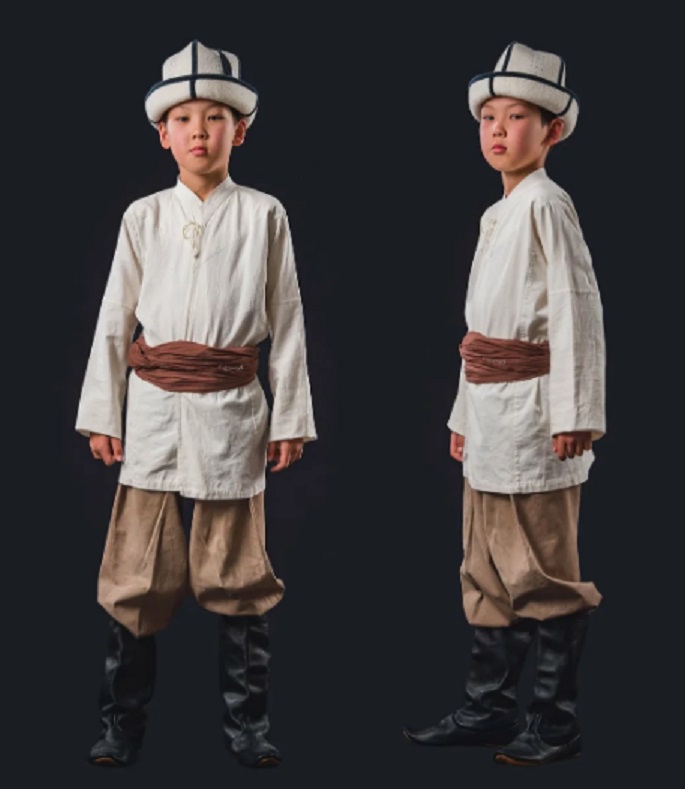Elechik is a women's headwear in the form of a turban. In its full form, it consists of three parts: a cap with a side piece worn on the head, a small rectangular piece of fabric on top that covers the neck and is sewn under the chin; and on top of everything, a turban made of white material. Among different tribal groups of Kyrgyzstan, the women's turban had various shapes — from simple wraps to complex structures that slightly resembled the Russian horned kik. The turban became widely popular in Kyrgyzstan.

It was called kalek, but among the southern and northern Kyrgyz, it was known as elechik. This name was also used by some groups of Kazakhs. The elechik was first worn by a young woman when she was sent to her husband's house, thereby emphasizing her transition to another age group. In a wedding blessing for the bride, it was said: "May your white elechik never fall from your head." This was a wish for long family happiness.
Elechik was worn in winter and summer; it was customary not to leave the yurt without it, even to fetch water.

In northern Kyrgyzstan, women's headwear consisted of a small, form-fitting cap with a strip that descended down the back, and a turban tied over it. The turban was made of thin white fabric or gauze. Depending on the shape of the turban and the decorations on the cap, there were four types of women's headwear.
The women of Issyk-Kul, Chui, and Tien Shan wrapped the fabric for the turban in a spiral, forming even protrusions that rose from the head; the turban itself had a cylindrical shape, and its end was wrapped to the left side.

In the Talas Valley and in the northern parts of the modern Osh region, which were inhabited by tribal groups such as Saruu, Kytai, Kutchu, Jetigen, and Bagysh, the turban was round or oval in shape; it was very wide at the top (without a brim) and had a relatively small forehead protrusion.
In the eastern areas of the modern Osh region, as well as among Kyrgyz women from the Munduz and Basyz tribes, the turban was larger and had a prominent overhang over the forehead. The cap, which had a helmet-like shape, was skillfully embroidered with colored silk using very fine stitching; the parts adjacent to the forehead and cheeks, as well as the strip descending to the back, were embroidered. Very long pendants made of coral beads, fastened with silver plates, were attached to the cap, hanging down to the chest.

In the southwestern areas of the Osh region, where groups called Ichkilik lived, the turban had a more rounded shape and was quite tall, while the cap was similar to the previous one. Sometimes a decorative scarf was draped over the turban, the corner of which, falling on the back, was adorned with embroidery and fringe.

The turban was decorated in various ways: with embroidered stripes crossing in front, silk ribbons, silver ornaments, corals, coins, and pearls.
In the Pre-Issyk-Kul region and in the Chui Valley, the elechik is rarely seen on elderly or older women, while in Tien Shan it is encountered somewhat more frequently. In the Talas Valley, however, the ancient headwear — ileki — is much more widespread, and it can be seen on women of middle age. To the south, this headwear is less common, and in the southern part of the Osh region, it has completely fallen out of use. Among the Kyrgyz living in the Jirgatol district of Tajikistan, the ancient headwear has survived only as a wedding attire.
















































